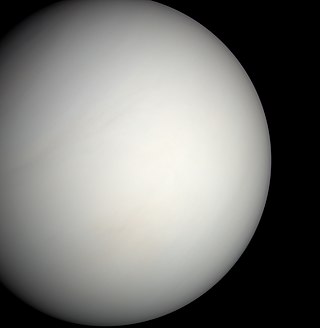
Venus is the second planet from the Sun. It is a terrestrial planet and is the closest in mass and size to its orbital neighbour Earth. Venus has by far the densest atmosphere of the terrestrial planets, composed mostly of carbon dioxide with a thick, global sulfuric acid cloud cover. At the surface it has a mean temperature of 737 K and a pressure 92 times that of Earth's at sea level. These extreme conditions compress carbon dioxide into a supercritical state at Venus's surface.
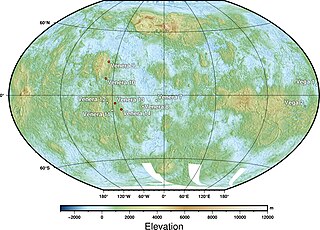
The Venera program was a series of space probes developed by the Soviet Union between 1961 and 1984 to gather information about the planet Venus.
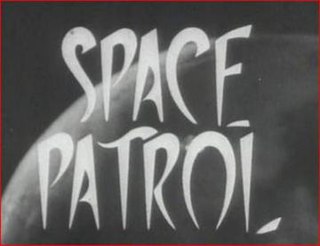
Space Patrol is a British science fiction television series featuring marionettes that was produced in 1962 and broadcast from the beginning of April 1963. It was written and produced by Roberta Leigh in association with ABC Weekend TV.
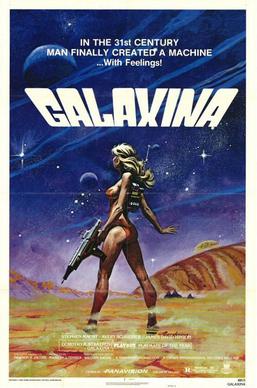
Galaxina is a 1980 American science fantasy-comedy film written and directed by William Sachs. Shot on a low budget, the film stars 1980 Playboy Playmate of the Year Dorothy Stratten, who was murdered by her husband shortly after the film's release.

Lucky Starr and the Oceans of Venus is the third novel in the Lucky Starr series, six juvenile science fiction novels by Isaac Asimov that originally appeared under the pseudonym Paul French. The novel was first published by Doubleday & Company in 1954. Since 1972, reprints have included a foreword by Asimov explaining that advancing knowledge of conditions on Venus have rendered the novel's descriptions of that world inaccurate.

The planet Venus has been used as a setting in fiction since before the 19th century. Its opaque cloud cover gave science fiction writers free rein to speculate on conditions at its surface—a "cosmic Rorschach test", in the words of science fiction author Stephen L. Gillett. The planet was often depicted as warmer than Earth but still habitable by humans. Depictions of Venus as a lush, verdant paradise, an oceanic planet, or fetid swampland, often inhabited by dinosaur-like beasts or other monsters, became common in early pulp science fiction, particularly between the 1930s and 1950s. Some other stories portrayed it as a desert, or invented more exotic settings. The absence of a common vision resulted in Venus not developing a coherent fictional mythology, in contrast to the image of Mars in fiction.
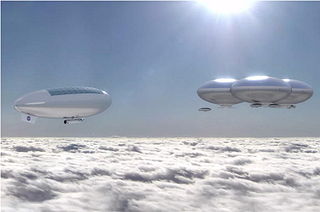
The colonization of Venus has been a subject of many works of science fiction since before the dawn of spaceflight, and is still discussed from both a fictional and a scientific standpoint. However, with the discovery of Venus's extremely hostile surface environment, attention has largely shifted towards the colonization of the Moon and Mars instead, with proposals for Venus focused on habitats floating in the upper-middle atmosphere and on terraforming.

The terraforming of Venus or the terraformation of Venus is the hypothetical process of engineering the global environment of the planet Venus in order to make it suitable for human habitation. Adjustments to the existing environment of Venus to support human life would require at least three major changes to the planet's atmosphere:
- Reducing Venus's surface temperature of 737 K
- Eliminating most of the planet's dense 9.2 MPa (91 atm) carbon dioxide and sulfur dioxide atmosphere via removal or conversion to some other form
- The addition of breathable oxygen to the atmosphere.
The Grand Tour is a series of novels written by American science fiction author Ben Bova.

The atmosphere of Venus is the very dense layer of gases surrounding the planet Venus. Venus's atmosphere is composed of 96.5% carbon dioxide and 3.5% nitrogen, with other chemical compounds present only in trace amounts. It is much denser and hotter than that of Earth; the temperature at the surface is 740 K, and the pressure is 93 bar (1,350 psi), roughly the pressure found 900 m (3,000 ft) under water on Earth. The atmosphere of Venus supports decks of opaque clouds of sulfuric acid that cover the entire planet, preventing optical Earth-based and orbital observation of the surface. Information about surface topography has been obtained exclusively by radar imaging.
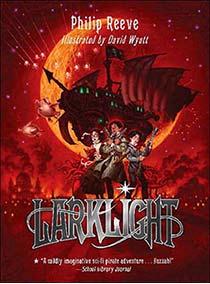
Larklight, or the Revenge of the White Spiders! or to Saturn's Rings and Back! is a young adult novel written by Philip Reeve and illustrated by David Wyatt. It is the first book in the Larklight Trilogy.

Milcząca Gwiazda, literal English translation The Silent Star, is a 1960 East German/Polish color science fiction film based on the 1951 science fiction novel The Astronauts by Polish science fiction writer Stanisław Lem. It was directed by Kurt Maetzig, and stars Günther Simon, Julius Ongewe and Yoko Tani. The film was first released by Progress Film in East Germany, running 93 min. Variously dubbed and cut versions were also released in English under other titles: First Spaceship on Venus, Planet of the Dead, and Spaceship Venus Does Not Reply.
![<i>Adventures of Captain Wrongel</i> 1976 [[Soviet Union]] film](https://upload.wikimedia.org/wikipedia/en/thumb/2/20/Adventures_of_Captain_Vrungel_screencap.jpg/320px-Adventures_of_Captain_Vrungel_screencap.jpg)
Adventures of Captain Wrongel is a 1976–1979 Soviet cutout/traditional animation adventure miniseries by David Cherkassky, Kievnauchfilm, loosely based on the novel with the same name by Andrey Nekrasov. The series consists of 13 episodes, of which 1–3 were animated/filmed in 1976, 4–6 in 1977, 7–9 in 1978, and 10–13 in 1979.

The Sky People is an alternate history science fiction novel by American writer S. M. Stirling. It was first published by Tor Books in hardcover in November 2006, with a book club edition co-published with the Science Fiction Book Club following in December of the same year. Tor issued paperback, ebook, and trade paperback editions in October 2007, April 2010, and May 2010 respectively. Audiobook editions were published by Tantor Media in January 2007.
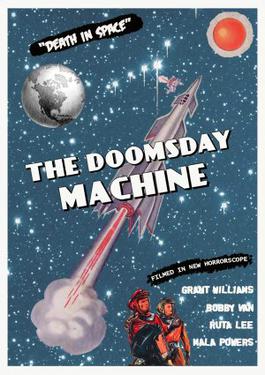
Doomsday Machine, also known as Escape from Planet Earth, is an American science fiction film mostly filmed in 1967 but completed without the original cast or sets in 1972.

The possibility of life on Venus is a subject of interest in astrobiology due to Venus' proximity and similarities to Earth. To date, no definitive evidence has been found of past or present life there. In the early 1960s, studies conducted via spacecraft demonstrated that the current Venusian environment is extreme compared to Earth's. Studies continue to question whether life could have existed on the planet's surface before a runaway greenhouse effect took hold, and whether a relict biosphere could persist high in the modern Venusian atmosphere.

Planeta Bur is a 1962 Sovcolor Soviet science fiction adventure film scripted by Alexander Kazantsev from his novel, and co-scripted and directed by Pavel Klushantsev.

2-Headed Shark Attack is a 2012 American horror film with an ensemble cast by The Asylum, released on January 31, 2012 in the United States. Directed by Christopher Ray, the film stars Carmen Electra, Charlie O'Connell, Brooke Hogan, Joseph Velez, Christina Bach, David Gallegos and Corinne Nobili. The film premiered on September 8, 2012 on Syfy.

"Brake" is a science fiction short story by American writer Poul Anderson, first published in 1957 in Astounding Science Fiction and reprinted in the collections Beyond the Beyond (1969) and The Psychotechnic League (1981). As a component of the Psychotechnic League future history / alternate history, "Brake" takes place in 2270, as the civilization built up in the aftermath of the 1958 Third World War is being torn between mutually antagonistic factions, on the verge of collapsing into "the day of genocide and the night of ignorance and tyranny".

Five Against Venus, written by Philip Latham, is a science-fiction novel first published in the United States in 1952 by the John C. Winston Company. Philip Latham was the nom de plume of Robert S. Richardson, a professional astronomer who also provided technical assistance on movies such as Destination Moon and wrote scripts for the Captain Video television series.











![<i>Adventures of Captain Wrongel</i> 1976 [[Soviet Union]] film](https://upload.wikimedia.org/wikipedia/en/thumb/2/20/Adventures_of_Captain_Vrungel_screencap.jpg/320px-Adventures_of_Captain_Vrungel_screencap.jpg)






